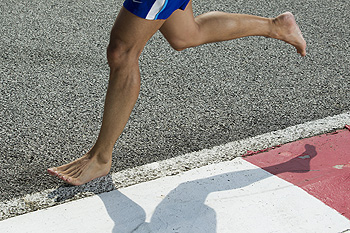
Wilmington (937) 382-2347
(513) 791-4764
Fax
(513) 932-1606

Wilmington (937) 382-2347
(513) 791-4764
Fax
(513) 932-1606
 A study has found that running barefoot reduces stresses on your feet. Utilizing high-speed video and special scales, researchers found that runners in shoes and barefoot runners land on different parts of the foot. Barefoot runners land towards the front of the foot while runners with shoes land on their heels. Landing on the front of the foot produces very little stress compared to landing on the heel. One evolutionary biologist was unsurprised given that humans have evolved to not need shoes. However, it will likely take some time for most people to toughen up the bottoms of their feet to be comfortable running barefoot.
A study has found that running barefoot reduces stresses on your feet. Utilizing high-speed video and special scales, researchers found that runners in shoes and barefoot runners land on different parts of the foot. Barefoot runners land towards the front of the foot while runners with shoes land on their heels. Landing on the front of the foot produces very little stress compared to landing on the heel. One evolutionary biologist was unsurprised given that humans have evolved to not need shoes. However, it will likely take some time for most people to toughen up the bottoms of their feet to be comfortable running barefoot.
Barefoot running has its own share of benefits and disadvantages. If you have any concerns about your feet or ankles, contact Dr. Gerald Perelman from Ohio. Our doctor will treat your foot and ankle needs.
Barefoot Running
The Impact of Barefoot Running
The Advantages of Barefoot Running
The Drawbacks of Barefoot Running
So, what can runners do to make barefoot running safe? It’s best to make a slow transition from running shoes to barefoot running. Once the feet begin to adjust, try walking, then jogging and gradually increasing the distance. Minimalist running shoes may also be an option.
If you have any questions please feel free to contact one of our office located in Wilmington, OH . We offer the newest diagnostic and treatment technologies for all your foot and ankle needs.